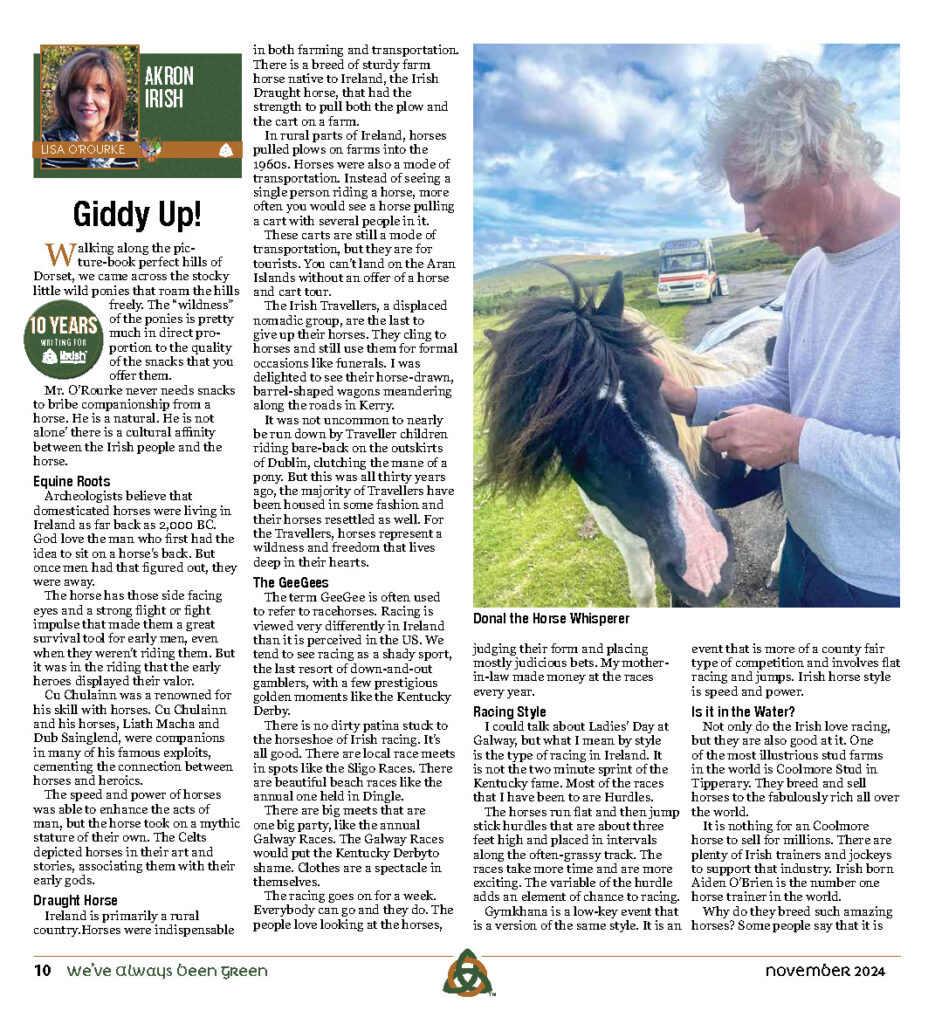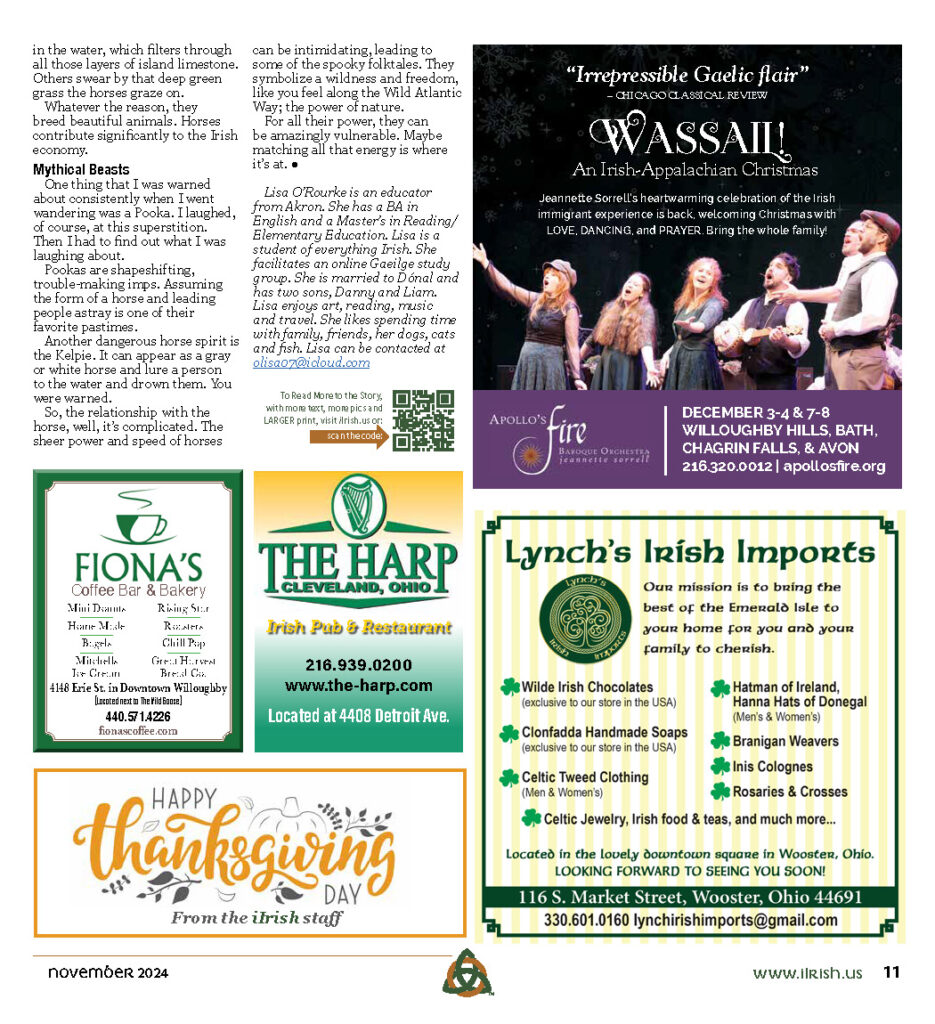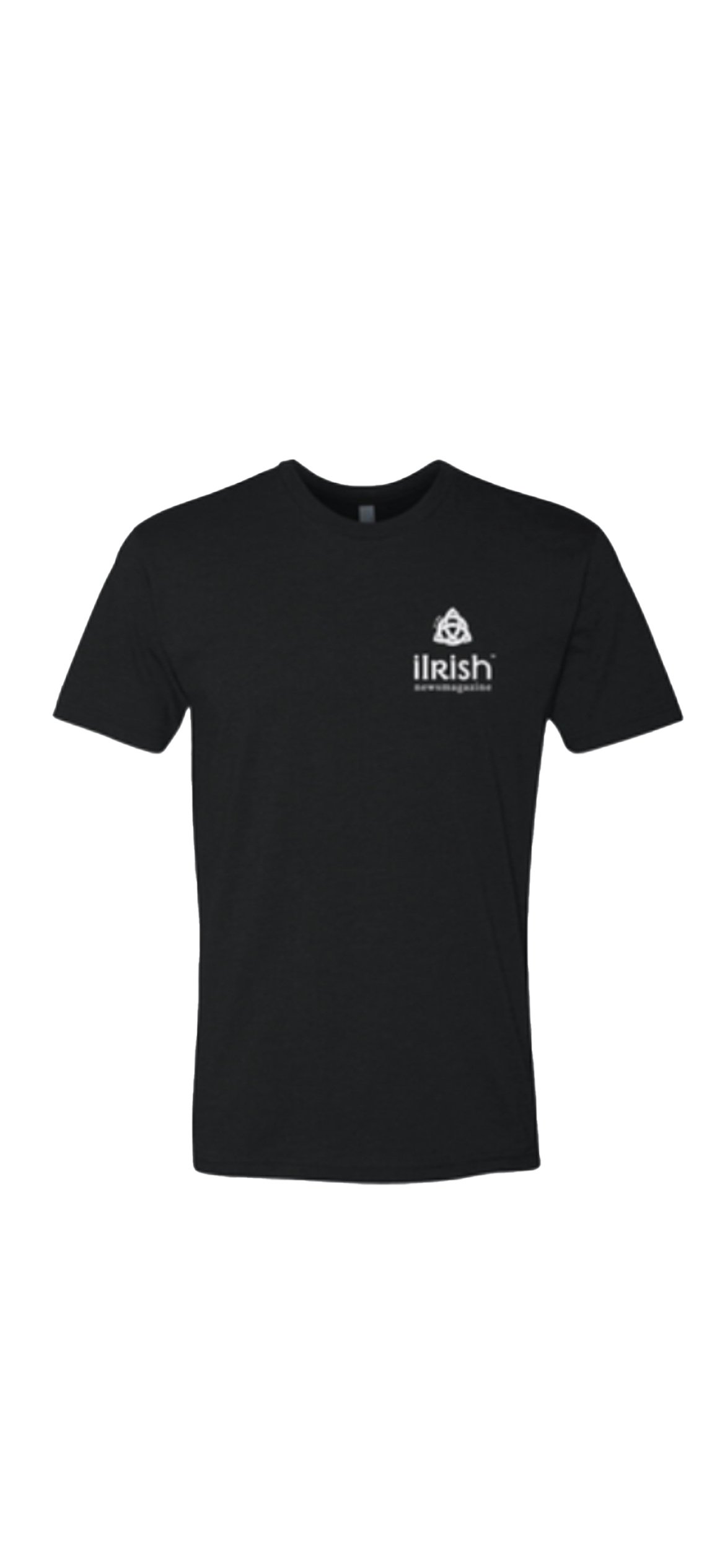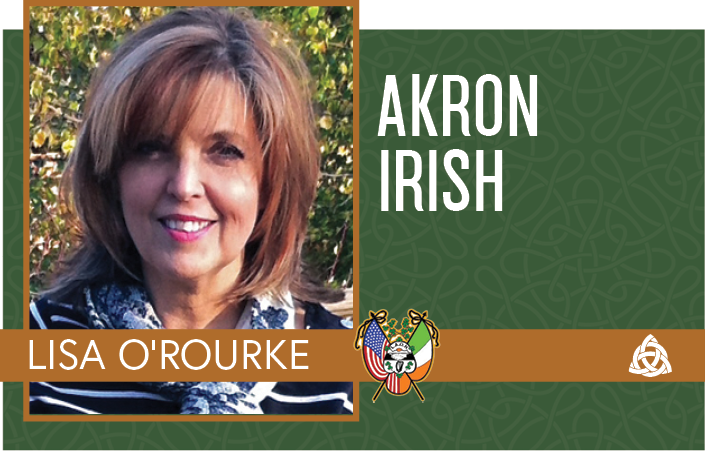
By Lisa O’Rourke
Walking along the picture-book perfect hills of Dorset, we came across the stocky little wild ponies that roam the hills freely. The “wildness” of the ponies is pretty much in direct proportion to the quality of the snacks that you offer them.
Mr. O’Rourke never needs snacks to bribe companionship from a horse. He is a natural. He is not alone’ there is a cultural affinity between the Irish people and the horse.
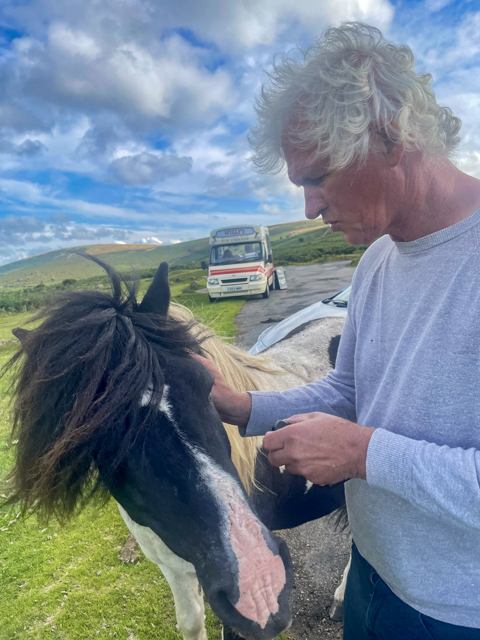 Donal the Horse Whisperer
Donal the Horse WhispererEquine Roots
Archeologists believe that domesticated horses were living in Ireland as far back as 2,000 BC. God love the man who first had the idea to sit on a horse’s back. But once men had that figured out, they were away.
The horse has those side facing eyes and a strong flight or fight impulse that made them a great survival tool for early men, even when they weren’t riding them. But it was in the riding that the early heroes displayed their valor.
Cu Chulainn was a renowned for his skill with horses. Cu Chulainn and his horses, Liath Macha and Dub Sainglend, were companions in many of his famous exploits, cementing the connection between horses and heroics.
The speed and power of horses was able to enhance the acts of man, but the horse took on a mythic stature of their own. The Celts depicted horses in their art and stories, associating them with their early gods.
Draught Horse
Ireland is primarily a rural country. Horses were indispensable in both farming and transportation. There is a breed of sturdy farm horse native to Ireland, the Irish Draught horse, that had the strength to pull both the plow and the cart on a farm.
In rural parts of Ireland, horses pulled plows on farms into the 1960s. Horses were also a mode of transportation. Instead of seeing a single person riding a horse, more often you would see a horse pulling a cart with several people in it.
These carts are still a mode of transportation, but they are for tourists. You can’t land on the Aran Islands without an offer of a horse and cart tour.
The Irish Travellers, a displaced nomadic group, are the last to give up their horses. They cling to horses and still use them for formal occasions like funerals. I was delighted to see their horse-drawn, barrel-shaped wagons meandering along the roads in Kerry.
It was not uncommon to nearly be run down by Traveller children riding bare-back on the outskirts of Dublin, clutching the mane of a pony. But this was all thirty years ago, the majority of Travellers have been housed in some fashion and their horses resettled as well. For the Travellers, horses represent a wildness and freedom that lives deep in their hearts.
The GeeGees
The term GeeGee is often used to refer to racehorses. Racing is viewed very differently in Ireland than it is perceived in the US. We tend to see racing as a shady sport, the last resort of down-and-out gamblers, with a few prestigious golden moments like the Kentucky Derby.
There is no dirty patina stuck to the horseshoe of Irish racing. It’s all good. There are local race meets in spots like the Sligo Races. There are beautiful beach races like the annual one held in Dingle.
There are big meets that are one big party, like the annual Galway Races. The Galway Races would put the Kentucky Derby to shame. Clothes are a spectacle in themselves.
The racing goes on for a week. Everybody can go and they do. The people love looking at the horses, judging their form and placing mostly judicious bets. My mother-in-law made money at the races every year.
Racing Style
I could talk about Ladies’ Day at Galway, but what I mean by style is the type of racing in Ireland. It is not the two minute sprint of the Kentucky fame. Most of the races that I have been to are Hurdles.
The horses run flat and then jump stick hurdles that are about three feet high and placed in intervals along the often-grassy track. The races take more time and are more exciting. The variable of the hurdle adds an element of chance to racing.
Gymkhana is a low-key event that is a version of the same style. It is an event that is more of a county fair type of competition and involves flat racing and jumps. Irish horse style is speed and power.
Is it in the Water?
Not only do the Irish love racing, but they are also good at it. One of the most illustrious stud farms in the world is Coolmore Stud in Tipperary. They breed and sell horses to the fabulously rich all over the world.
It is nothing for an Coolmore horse to sell for millions. There are plenty of Irish trainers and jockeys to support that industry. Irish born Aiden O’Brien is the number one horse trainer in the world.
Why do they breed such amazing horses? Some people say that it is in the water, which filters through all those layers of island limestone. Others swear by that deep green grass the horses graze on.
Whatever the reason, they breed beautiful animals. Horses contribute significantly to the Irish economy.
Mythical Beasts
One thing that I was warned about consistently when I went wandering was a Pooka. I laughed, of course, at this superstition. Then I had to find out what I was laughing about.
Pookas are shapeshifting, trouble-making imps. Assuming the form of a horse and leading people astray is one of their favorite pastimes.
Another dangerous horse spirit is the Kelpie. It can appear as a gray or white horse and lure a person to the water and drown them. You were warned.
So, the relationship with the horse, well, it’s complicated. The sheer power and speed of horses can be intimidating, leading to some of the spooky folktales. They symbolize a wildness and freedom, like you feel along the Wild Atlantic Way; the power of nature.
For all their power, they can be amazingly vulnerable. Maybe matching all that energy is where it’s at.

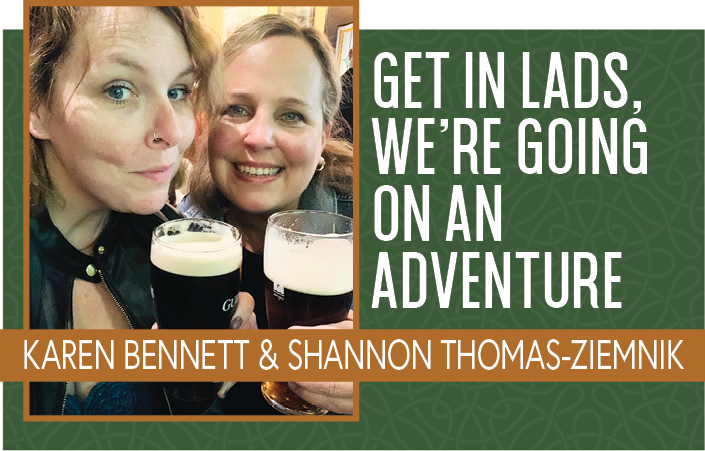
Get in Lads, We’re Going on an Adventure: Journey into Westeros
When you love Shenanigans, writing and travel, you share …

Cleveland Hibernians Eastside Bluestone And Deifiúr Divisions February News & Events
Join us – we are Bluestone Division, an Ancient Order of Hibernians (aoh.com) OH chapter founded 9/17/2013 and Deiriúr Of Charity, a Ladies Ancient Order of Hibernians Division (ladiesaoh.com) founded in 3/21/20222022, with a rich history rooted in Irish volunteerism, labor and heritage. New members wanting to make a difference in our communities are welcome –
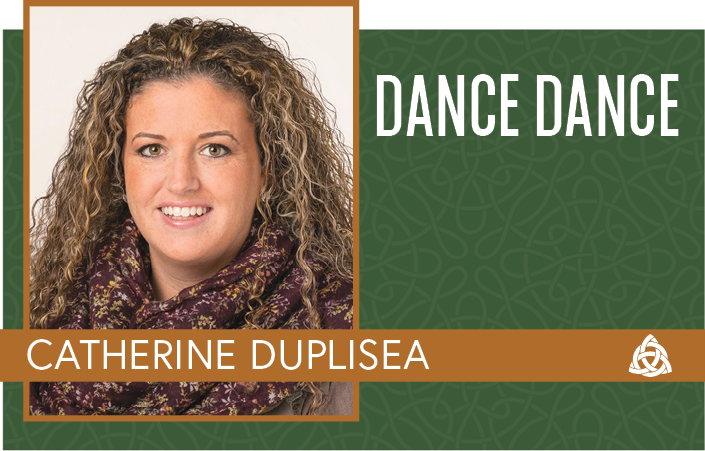
Dance Dance: The Music Behind the Dancing, Featuring a Young Local Feis Musician
Catherine is a life-long student and teacher of Irish dance – she shares highlights, history and successes ode to this wonderful and impactful community.
Read more of Lisa’s Akron Irish columns HERE!
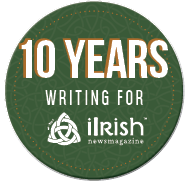
Lisa O'Rourke
*Lisa O’Rourke is an educator from Akron. She has a BA in English and a Master’s in Reading/Elementary Education. Lisa is a student of everything Irish, primarily Gaeilge, and runs a Gaeilge study group at the AOH/Mark Heffernan Division. Lisa is married to Dónal, has two sons, Danny and Liam, and enjoys art, reading, music, and travel, spending time with her dog, cats and fish. Lisa can be contacted at [email protected].Please send Akron events to my email!
